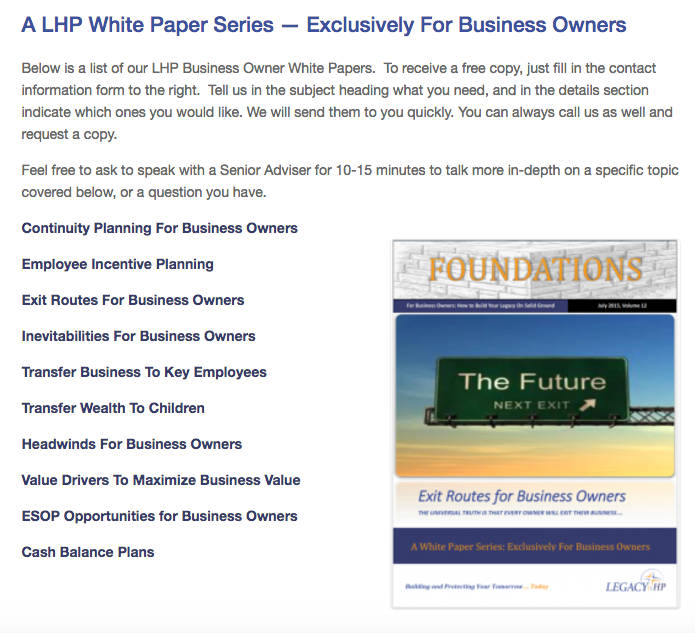Why is cash flow is so important to third party buyers, and by extension, to sellers of closely held companies? In short, a seller must demonstrate an increasing stream of cash flow from the business. Without a healthy cash flow, a buyer may pass over the opportunity to buy your business in favor of purchasing a “good” company with less risk.
In this issue, we will examine why cash flow is also crucial to those owners who wish to transfer their companies to insiders (employees, co-owners or children) and how to allocate cash flow.
Let me suggest the following definition of cash flow. Business cash flow is the portion of the annual net cash flow from operating activities that remains available for discretionary purposes (after the basic obligations of the business have been met). Because we are discussing cash flow in the context of exiting your business, the “discretionary purpose” referred to above is the purchase of your ownership in your company.
As you prepare to transition out of your business (using any type of ownership transfer other than liquidation or, in some cases, a gift of the company to your children), it is imperative that you secure an accurate future cash flow model. Why?
In a sale to insiders (employees, co-owners or children), cash flow may be the source—the sole source, at least initially—of payments to you. Insiders may not have enough money of their own with which to pay you. Without significant planning and implementation, insiders may not be able to quickly acquire or borrow that cash.
If you choose instead to sell to a third party, the valuation upon which buyers make their offers is likely to be based on a multiple of cash flow.
Should you plan to sell part or all of your business beginning this year, your CPA should make cash flow projections for the current year and next four years.
If you are preparing your own cash flow projection, resist the temptation to create an overly-optimistic forecast. Your projection must be grounded in the reality of past actual performance rather than in your rosy hopes for the future. To avoid this temptation, owners usually ask their CFOs or CPAs to create these forecasts.
With a realistic cash flow projection in hand, you can begin to plan the most tax-effective way possible to achieve that future cash flow.
It bears repeating here that the future cash flow of the business may be your buyer’s only source (at least in the early years) of funds to pay you. If the company, under new ownership, cannot achieve the cash flow numbers that you project, you may not receive the payoff that you expect.
How to Use the Cash Flow Forecast
Forecasting cash flow is the first step. The second is to calculate how that cash flow will be allocated during the ownership transition. Determining the net after-tax distribution to you is the goal of this exercise.
To do so, you must calculate, for each year of your exit plan period, the expected available cash flow reduced by: 1) reasonable compensation to you and 2) the cash the company must retain (for growth, working capital, etc. ).
The remaining cash flow is distributed to the shareholders, you, and—to the extent you have sold part of your company—the new owners.
New owners use that distributed cash to pay you for shares of ownership. If the projected cash flow to new owners is insufficient to pay you through an installment note, your exit is at best temporary.
Since cash flow is the core of an Exit Plan, how do we 1) increase cash flow; and 2) use it wisely?
A successful Exit Plan minimizes taxes for both seller and buyer and keeps sellers in control (and minimizes their risk) until they receive full value for their ownership. All plans begin with an informed understanding of current and future cash flow and require considerable planning and action to achieve these goals.
Your Exit Plan is founded upon your exit objectives (when you want to leave, how much money you want and need, and who should own the business after you) and upon the likely future cash flow of the business. Forecasting the amount of cash flow and determining how that cash flow is used is, indeed, the ultimate reality check for your business exit.
Take care and have a good day,
Michael
ABOUT LEGACYHP: Our passion is our mission -- To position our clients into a positive, energized, posture -- within your businesses and within your lives -- So that you manage change confidently, take decisive action, and enjoy life's journey Today... while you enjoy building your Legacy for Tomorrow.
Notice: The information contained in this article is general in nature and is not legal, tax or financial advice. For information regarding your particular situation, contact an attorney or a tax or financial advisor. The information in this newsletter is provided with the understanding that it does not render legal, accounting, tax or financial advice. In specific cases, clients should consult their legal, accounting, tax or financial advisor. This article is not intended to give advice or to represent our firm as being qualified to give advice in all areas of professional services. Exit Planning is a discipline that typically requires the collaboration of multiple professional advisors. To the extent that our firm does not have the expertise required on a particular matter, we will always work closely with you to help you gain access to the resources and professional advice that you need.


